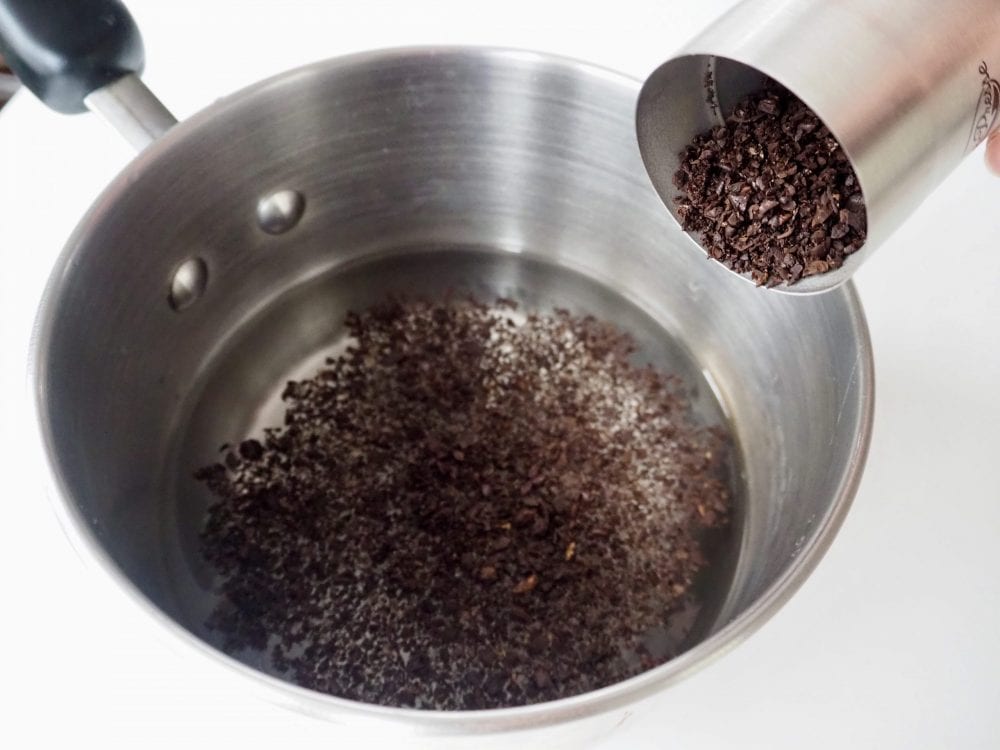
Wide-brim hats, chaps, and cattle drives were mainstays in the life of a cowboy once upon a Western time. It was a cup of strong, black coffee that helped a cowboy get through those rough ridin’ days.
With today’s technology, making cowboy coffee may seem like a disappearing art form. However, if you are fond of the outdoors, cowboy coffee is just one step above instant in terms of simplicity. In this article, we’ll show you how to make this straightforward coffee to enjoy your next outdoor trip in true cowboy fashion.
Cowboy Coffee Recipe:
What You’ll Need:
- 4 cups (1 quart) of water (plus optional 1/4 cup)
- 1/2 cup coarsely-ground coffee
- A pinch of salt
- Coffee kettle/pot
- Cup or mug
- A fire or stovetop
1. Pour water and salt into the pot.
Pour 4 cups of water into your coffee pot. Add a pinch of salt and place it over an open flame or on your stovetop.
2. Add the coffee grounds.
Once the water is warm, pour in the coffee grounds. Stir well.
3. Bring to a boil.
Bring the water to a rolling boil. Let it boil for about 2 to 3 minutes.
4. Remove from heat.
Remove the pot from the heat and let it sit for a minute. This will help the grounds settle to the bottom.
5. Strain or add cold water (optional).
If you see grounds on the surface, try adding 1/4 cup or less of cold water. If you’re in the kitchen and not on a cattle drive, you can also strain the coffee before serving. We won’t tell.
6. Serve and enjoy.
You can expect full-bodied coffee with a robust flavor reminiscent of a campfire.
How to Get the Best From Your Cowboy Coffee
The mention of cowboy coffee probably conjures up images of murky, tasteless brews. However, it shouldn’t turn out that way depending on how you make it and what coffee you use. Adjust as needed until you find the perfect balance of water, coffee, and heat.
The first thing you’ll want to pay attention to is your grind size. You’ll get the best flavor from freshly-ground beans, but make sure you grind them coarsely. If you grind too finely, you may get over-extracted, bitter coffee. Plus, you’ll drink a mouthful of grounds!
Some recipes will mix the water and coffee and then bring it to a boil. Others will boil the water first, then add the coffee. It’s just a matter of preference, but keep in mind that when you boil coffee, the acidity is pulled out of the grounds, making it less sharp than you’d expect.
Adding cold water helps to settle the grounds and also halts the extraction process. It will give your cowboy coffee a more mellow flavor. And if you’re not a fan of grounds, don’t be afraid to strain!
RELATED READ: How to Grind Coffee Beans Without a Grinder

Cowboy Coffee Recipe
Equipment
- Coffee kettle/pot
- Cup or mug
- A fire or stovetop
Ingredients
- 4 cups water (plus optional 1/4 cup)
- 1/2 cup coarsely-ground coffee
- A pinch of salt
Instructions
- Pour 4 cups of water into your coffee pot. Add a pinch of salt and place it over an open flame or on your stovetop.
- Once the water is warm, pour in the coffee grounds. Stir well.
- Bring the water to a rolling boil. Let it boil for about 2 to 3 minutes.
- Remove the pot from the heat and let it sit for a minute. This will help the grounds settle to the bottom.
- If you see grounds on the surface, try adding 1/4 cup or less of cold water. If you're in the kitchen and not on a cattle drive, you can also strain the coffee before serving. We won’t tell.
- Serve and enjoy. You can expect full-bodied coffee with a robust flavor reminiscent of a campfire!
Nutrition
Giddyup and Enjoy Your Cowboy Coffee!
Making cowboy coffee is incredibly easy. All you need is coarsely-ground coffee beans, water, and heat. With a few minutes of boiling, you’ll get a dark, full-bodied cup of coffee with a heavy mouthfeel and a hint of campfire.
We hope this recipe helps you easily make cowboy coffee. Whether you’re in your kitchen or the mountains, you can enjoy a tasty cup of rustic coffee.
RELATED READS:
- How to Make Coffee While Camping
- What are the best camping percolators available this year?
- 20 Coffee Brewing Methods & Their Differences
Featured image credit: Jarno Holappa, Shutterstock



















